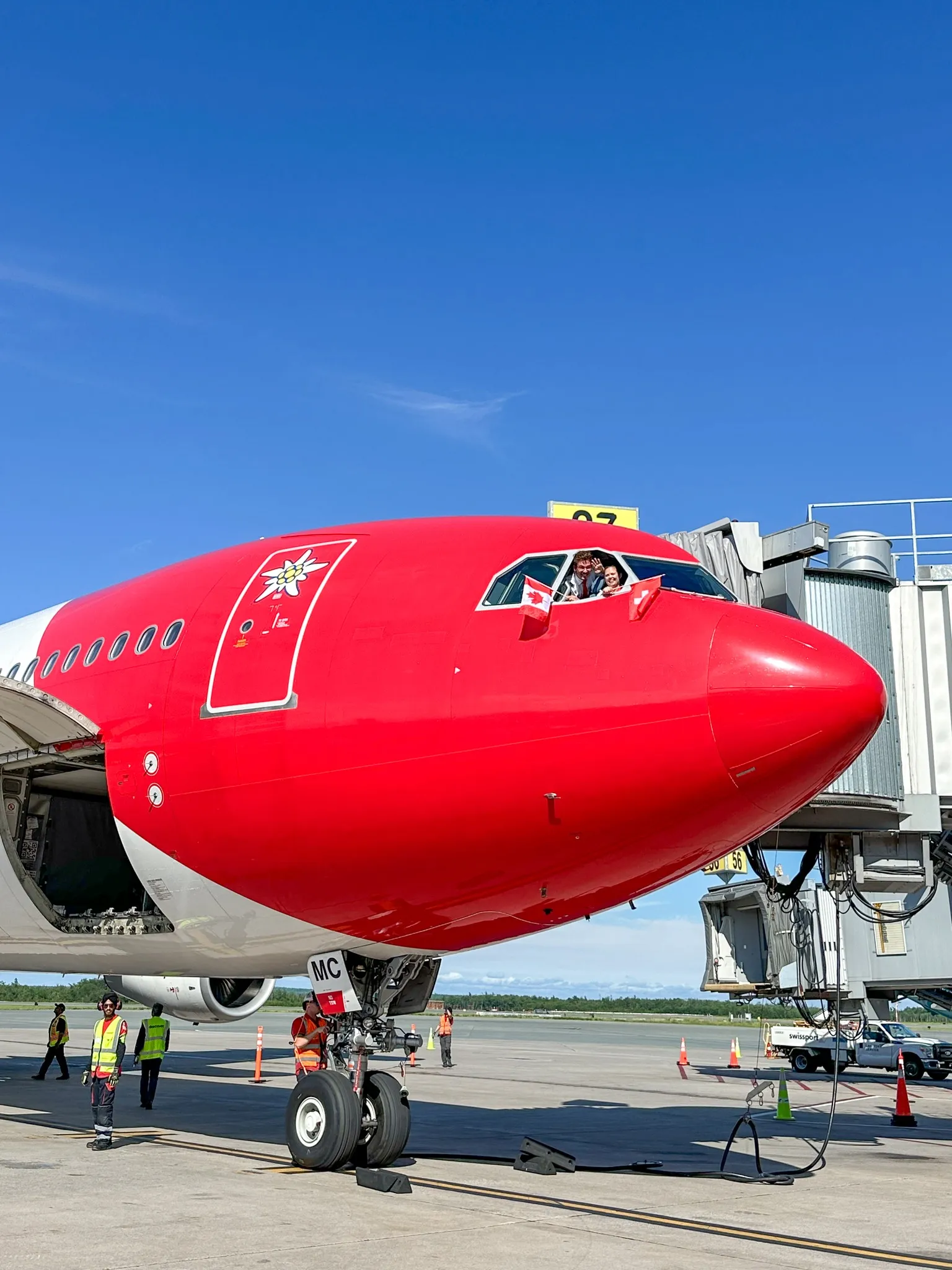HALIFAX — Swiss leisure carrier Edelweiss Air (WK) has landed in Halifax, making it the airline’s third Canadian destination and first in the east of the country.
The new service operates twice weekly from Zurich (ZRH) to Halifax Stanfield International Airport (YHZ) using an Airbus A340-300. It will operate from July 3 until October 5.
WK18 departs Zurich at 13:50, arriving in Halifax seven and a half hours later at 16:20. The return leg, WK19, takes off again eastbound at 19:05, landing the next morning in Zurich at 06:30 after six and a half hours in the air—flights operate on Sundays and Thursdays.
Last August, commenting on the announcement of the new route, Edelweiss CEO Bernd Bauer said, “The non-stop flight to Halifax provides our guests with a convenient starting point for exploring Atlantic Canada, an exciting travel destination.”
This year, the flight will be operated by the carrier’s 2-class 314-seat Airbus A340-300s, of which they currently have 5. As the A340 fleet is phased out over the next couple of years, many routes will be transferred to the Airbus A350-900, including Halifax, starting in May next year.
For the summer season of 2026, WK will operate all three of its Canadian destinations: Vancouver (YVR), Calgary (YYC), and now Halifax with its fleet of new (to them) second-hand A350s. This will mean a slight upgauge in seat count per frequency from 314 in total to 339; however, no weekly frequency changes have yet been announced.
Edelweiss Air is a Zurich-based, wholly owned leisure subsidiary of Swiss International Air Lines (LX) and a member of the Lufthansa Group, operating a fleet of 21 Airbus aircraft, comprising 14 A320-200s, 5 A340-300s, and 2 A350-900s, with orders for four more.

What This Means for Halifax
When the new Edelweiss flight was announced in August, Joyce Carter, CEO of the Halifax International Airport Authority, commented, “We’re delighted to welcome Edelweiss as our newest airline partner and to add Zurich to our ever-growing list of transatlantic routes.”
YHZ has been a transatlantic hotspot in recent years, both due to its blossoming tourism scene and its strategic geography. It finds itself closer to cities in Europe, such as Dublin, Edinburgh, and Manchester, than to Vancouver on its own country’s west coast. As such, it can be served directly by narrow-body aircraft to and from Europe, primarily by the 737 MAX and A321neo families.
A good example of this is WestJet (WS), which has essentially turned Halifax into a mini-hub for travelers in the eastern half of North America who want to travel to Europe without backtracking to Calgary (YYC). Its European network from the Maritime city has now grown to include Amsterdam (AMS), Barcelona (BCN), Dublin (DUB), Edinburgh (EDI), London (LGW), and Paris (CDG), all served by its Boeing 737 MAX 8 fleet.
From the other side of the pond, European carriers have also seen Halifax’s potential. Icelandair (FI) and Lufthansa’s Discover Airlines (4Y) have launched seasonal services from Reykjavík-Keflavík (KEF) and Frankfurt (FRA), respectively. Even BermudAir is getting in on the market with its twice-weekly E190 flights from Bermuda.
And it's not for nothing. Total visitation is up 2.6% compared to 2024, with 1.6 million nights booked in local hotels by June, an all-time high according to the CEO of Discover Halifax, Ross Jefferson. Tourism-based spending has also hit record levels, reaching 3.5 billion CAD (2.58 billion USD) province-wide in Nova Scotia.
“We anticipate that this new route will bring over 4,000 visitors to Halifax each summer,” said Edelweiss CEO Bernd Bauer.
Now, with the broader introduction of long-range narrowbodies like the Airbus A321LR and XLR, Halifax will be an airport to watch in the coming years. Last year, the airport reported an 11.2% increase in passenger volume compared to 2023, with up to 30 weekly non-stop flights to Europe.




